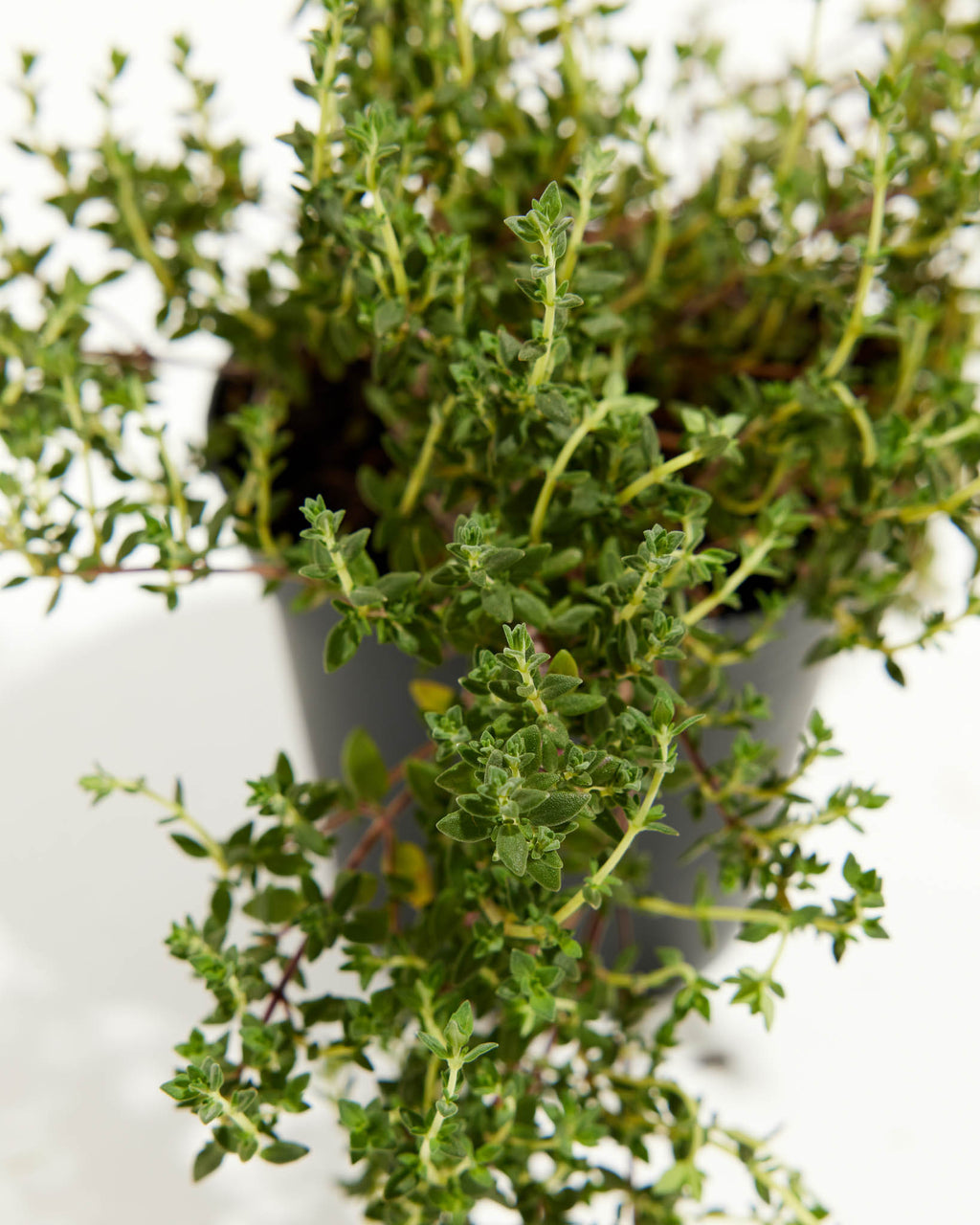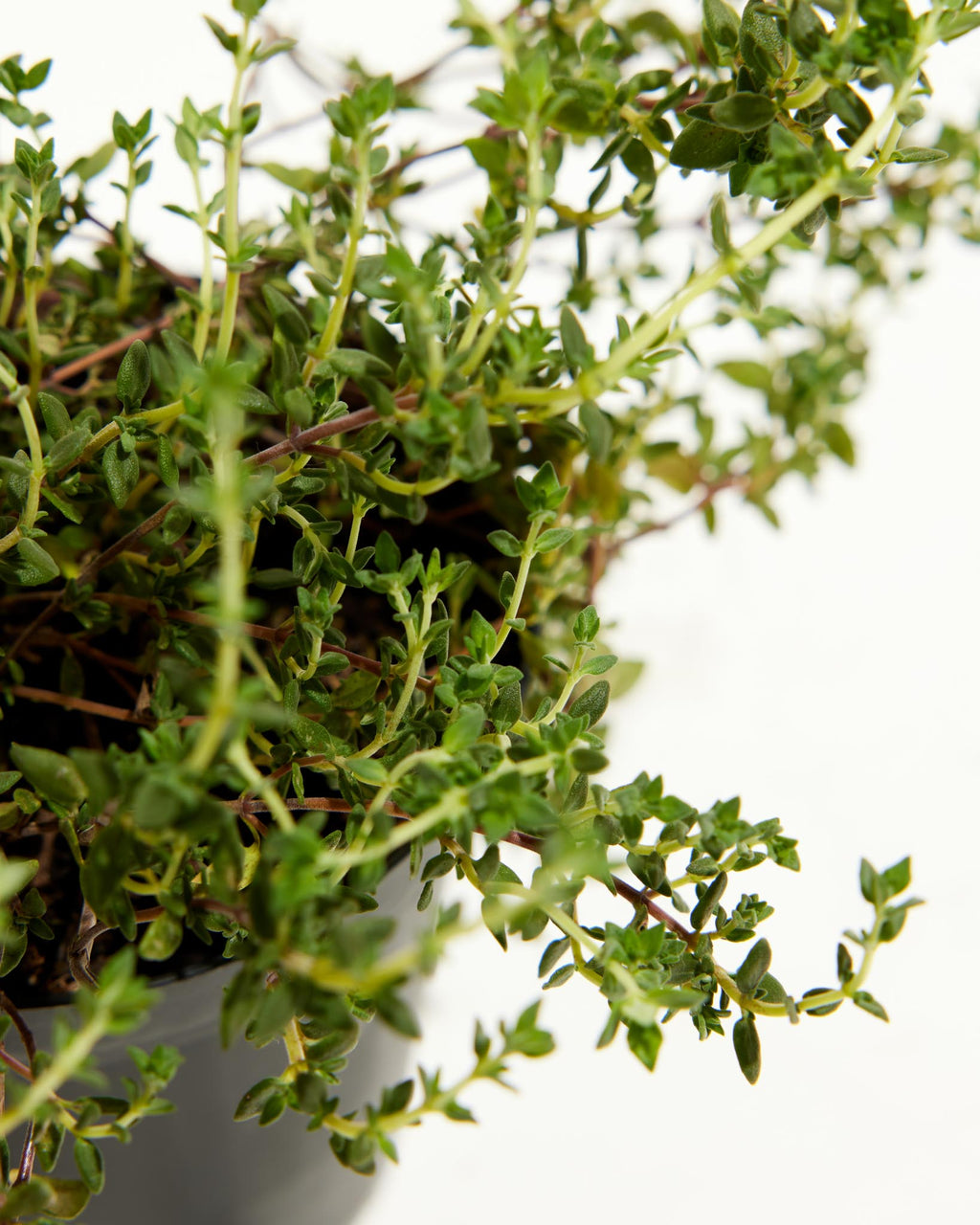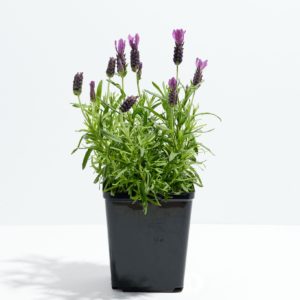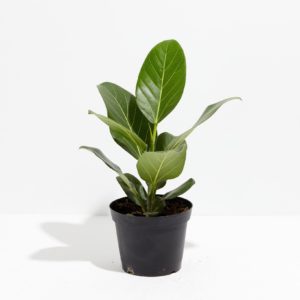-
LightHigh
Plant this herb in full sun (6-8 hours). -
WaterLow
Thyme is a drought tolerant plant once it gets established. Water the first several weeks if natural irrigation isn’t available. Let it dry between waterings. -
HumidityMedium
Average humidity is good for this plant. -
Temperature 68 to 86
This culinary herb or groundcover prefers moderately dry climates and mild winters in full sun. -
Hardiness Zones4|5|6|7|8|9|10
The herb likes a more Mediterranean climate. -
Re-pottingRarely
To transplant into a garden container or the garden bed, water your plant the night before. Dig the hole twice as wide as the grower pot and the same depth as the grower pot (not deeper). Remove the plant and center in the spot. Add rooting hormone around the roots of the plant. Water in the hole and let drain. If you have clay soils, add composted leaves to enhance the soil consistency. Fill around the plant and up to the top of its soil line. Tamp down with your hands to remove any air pockets. Water again around the drip line. -
CleaningAs needed
Any time of year, remove any dead, damaged, or diseased stems from the plant. After flowers fade on the plant, sheer back 1-2 inches to shape and promote new growth. This herb may wane in the heat of summer, so trim back, and it will recover in cooler months. -
PropagationDivision
To propagate your French Thyme: Container planting: Water your plant a couple of days before dividing and transplanting. Inspect your plant for overcrowding or if you want to spread more of the love in your garden. If it is root-bound in the pot, remove the plant and tease and pull apart the mass of roots. You can use a sharp, sterilized knife to divide the root mass. Ensure you have several healthy root sections in each division. Divide each clump into its new pot, using a size smaller to compensate for less root mass and deep enough for its roots to grow. Plant in well-draining potting mix amended with rooting hormone. Place the plant at the same level as the previous pot adding soil at the bottom. Water the soil and add more if settling occurs. Set it in medium, indirect sunlight for several weeks to settle in. Check the moisture each day and add misting to keep the soil moist while the roots establish. After 6-8 weeks, roots will begin to develop. You can tug onto the stem to ensure the roots are anchoring well. Once its roots establish, move the container to a sunny spot giving it full sun (6-8 hours). Garden planting: Water your plant a couple of days before dividing and transplanting. Lift the plant out of the ground with a shovel. Lay it gently on the ground with roots in tack. Use a knife to cut through the roots and divide the clump into sections for replanting. Transplant each clump by digging the hole no deeper than the root system and twice as wide. Center the transplant in the hole and add rooting hormone around the roots and water. Fill in around the plant with organic matter mixed with the native soil, careful not to cover it any more than the original plant. Water again well and monitor the soil moisture if it begins to dry. -
Frequently Asked Questions
What language is thyme from?
THYME (Thymus vulgaris): Origin: native to southern Europe and Mediterranean regions. The word thyme stems from the Greek, thymon, meaning to offer incense or sacrifice. This herb is symbolic of courage and activity and was used widely by the ancients to treat hookworm.
French Thyme (Thymus vulgaris) is a mounding plant of spreading gray-green foliage that thrives in Mediterranean climates. He does best with neglect and will grow in poor soil conditions. His leafy stems will spread like a ground cover making it a weed suppressor as well as a culinary herb delight! His distinct flavors embellish French, Lebanese, Italian, Greek, Turkish, Portuguese, and Caribbean cuisines. He grows in well-draining soil to 12 inches tall and 12 inches wide.





Reviews
There are no reviews yet.